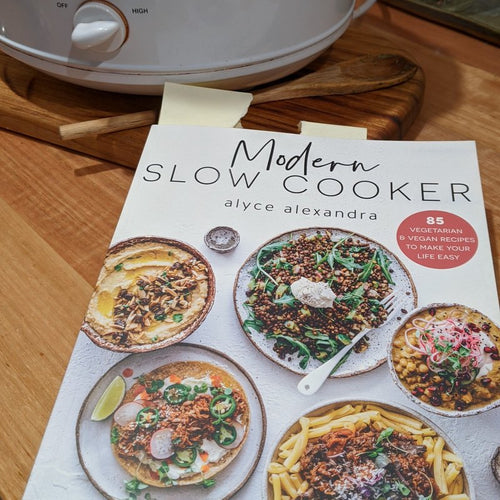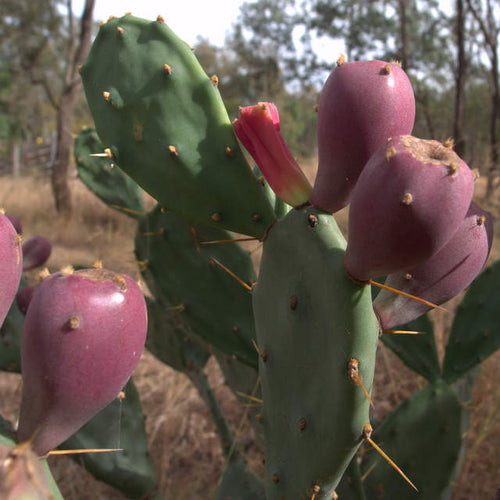Nourishing Traditions review - mastering the basics
Previously I started to review the introduction to Nourishing Traditions by Sally Fallon and Mary Enig. In this post I'll start on the first real chapter of recipes, called Mastering the Basics, which includes cultured dairy, sprouts, stocks, sauces and salad dressings.
See more posts on Eight Acres about Nourishing Traditions here.
Cultured Dairy in Nourishing Traditions
The strange part here is that we got Bella, our house cow, before I read this book and before I knew anything about the whole raw milk debate. We drank raw milk sometimes when we visited our friends on a dairy farm, but we never really valued it as we should have.
Pete actually really wanted a cow because he liked the dairy lifestyle, and I couldn't see a problem with it, as I described previously, it will make it easier for us to get steers for beef instead of having to buy them locally. Our friends told us they'd found the perfect cow for us, small, tame, already with a calf and used to being milked in the dairy, so even though we weren't totally ready, we brought home Bella and Molly and I'm so glad that we did!
| Here I am giving Bella a "thank you" hug |
| And here's Molly, our future dairy cow! |
With all the milk, 10-20 L/day, we started making cheese, and went on the cheese making course where I first heard about Nourishing Traditions, and the importance of raw milk in a traditional diet. Now that I've read Nourishing Traditions, I realise the role of raw milk in making probiotics and starting lactic-fermentations. So without Bella I wouldn't have read Nourishing Traditions and I wouldn't have the key ingredient to a traditional diet!
Nourishing Traditions recommends a number of different fermented milk products, including cultured butter, yoghurt, kefir, sour cream, cultured butter milk, cream cheese and whey. Fermented milk has the benefits of probiotic bacteria and makes the milk easier to digest as casein and and lactose enzymes are retained, as well as increase the vitamin content of the milk. Of course, if you have access to raw milk, its best to use it, but if you don't, any milk is better than nothing as you at least get to eat the good bacteria in the starter culture.
| cream cheese with the whey dripping out into a container |
Since we got Bella, I've tried to make all of those things. When we had enough cream, I made butter, sour cream and butter milk, but when the milk production decreased, we've had to buy butter and cream (uncultured) when we've needed them. I have continued to make yoghurt, both from pastuerised Bella milk and powdered milk, kefir from raw milk and cream cheese from raw milk. I have been saving the whey from the cream cheese to start fermentations, which I'll discuss further below.
Fermented Vegetables in Nourishing Traditions
I've explained the difference between lactic-fermented vegetables and vinegar pickling in a previous post. Basically lactic-fermentation is an ancient and gentle method of preserving vegetables with no heat or pressure, so the nutrients are retained (and even improved by the action of bacteria and enzymes), whereas vinegar pickling is a quick and easy method using heat, temperature and acidity to preserve veges using industrial processes, while destroying much of the nutritional value of the vegetables.
| My first jar of sauerkraut |
Most of the fermentation recipes in Nourishing Traditions call for whey, but if that's not available, extra salt can be used. I've seen a bit of discussion on whether whey is necessary and whether it even helps or hinders the process. I can report that I've had no trouble using my raw cream cheese whey, but I do wonder how well it would work with whey from pasteurised milk, as the culture would be very limited to certain bacteria, that may not do well on vegetables (by the way, the bacteria actually consume the glucose in the milk (part of lactose) or in the vegetables, producing lactic acid).
I know that the raw milk is full of different bacteria and enzymes, as well as the bacteria that I add to start the cheese, so there's a good chance that it really helps the fermentation. If you don't add whey, you're just hoping that you have enough bacteria naturally present on the vegetables to start the fermentation, and people report that it works, so don't be put off if you don't have whey!
I have made sauerkraut and pickled gherkins/cucumbers. I am growing radishes and beetroot in great anticipation of more pickling! I think its important to use organic veges for fermenting, otherwise the chemicals on the veges might inhibit the bacteria, so I just try to use up what I grow or grow what I want to use, that way I know I have cheap organic veges for fermenting. I have just used an old jam jar, but commercial crocks and jars are available. I used a spacer in some of them to hold the pickles under the brine, but in others I didn't bother and it worked fine too.
The hardest part is overcoming the gross-out factor of eating something that's sat on your kitchen bench for several days! According to NT, you will know if it doesn't work because it will stink, so I am hoping that is correct, and I've been trusting my nose :)
Sprouts in Nourishing Traditions
As I've mentioned a few times, I really enjoy sprouting, its one of the easiest foods in Nourishing Traditions to make, and the sprouts can be added to almost any meal (more about sprouts here). The benefit of sprouting is that the by starting the germination process, the enzyme inhibitors are deactivated, and vitamins and minerals are made more available, this makes the grains, nuts and seeds easier to digest.
So far I have sprouted alfalfa, fenugreek, mung beans, adzuki beans, chick peas and wheat in my little sprouting jar. I pretty much have some sprouts in the jar at all times, the only time I don't start sprouting is if I know I'll be going away, as the sprouting jar just needs to be rinsed twice a day, but that's not much work for a very tasty reward!
Stocks in Nourishing Traditions
I love making soups and casseroles and up until recently I had been incredibly lazy about making real stock. I admit to using stock cubes, expensive stock cubes! Probably full of MSG disguised as "natural flavour". More to save on freezer space than anything else, but now we have two massive chest freezers, there's plenty of space and I've been using up all our bones and vege scraps to regularly make real stock.
It has been surprisingly easy to do and now I have a freezer full of stock to add to all sorts of meals. The advantage of making stock is getting all the minerals out of the bones, also gelatine is really good for so many reasons which I won't list here (I admit I always thought gelatine was gross).
| Some turkey stock in the early stages |
I don't exactly follow the recipes in the book, which call for roasting the bones before cooking, and various other fussing around which I don't have time for, it just depends what I have on hand and how much time I have. I keep various vege offcuts in a bag in the freezer, as well as bones from steaks and chops.
My method is to put the bones or chicken carcass in a pot of water with some apple cider vinegar and leave to soak for about an hour. Bring to the boil, skim, add veges (carrot, celery, silverbeet stalks, beans, onions, whatever else is spare in the fridge or garden) and cook for as long as possible. Nourishing Traditions recommends cooking for 12-72 hours, which I found very difficult to achieve at first!
Often I would leave it on the stove top overnight, but then its still too hot to go into the fridge in the morning and I don't want to leave it on the stove while I'm at work, or to sit on the bench all day, so at times I only cooked it for 4-6 hours, which was better than nothing, but then I discovered the slow cooker method. I'm far more comfortable about leaving the slow cooker running while I'm sleeping, or at work, and then I can easily cook stock for 24 hours, any day of the week. During winter when we have the woodstove going I use that to cook the stock overnight.
I have made stock from every chicken we've killed recently, the turkey made 10 L of stock, fish stock from the tuna Pete caught on a fishing charter, and beef stock from home butchering. At the very least I chuck a beef bone into a slow cooker meal to get that extra flavour (and gelatine). I also chuck in any spare herbs, peppercorns, wine into the pot too, its great for using up leftovers.
Salad dressings and sauces in Nourishing Traditions
Nourishing Traditions has two types of salad dressing, those based on oil and vinegar and those based on mayonnaise. As I've mentioned previously, I've tried making both, and while the first one is very easy, the other one is more difficult without the right equipment! No success so far. We usually just have a mix of olive oil and balsamic vinegar, but I've mixed that up with mustard and herbs too for something different. Salad dressings are important for adding enzymes to the diet and making raw food taste great! Usually we have so many lovely fresh veges in the salad, a light dressing is plenty.
| Olive oil and balsamic vinegar dressing and my mayonnaise attempt |
Sauces, Marinade and Condiments in Nourishing Traditions
This section is probably more about creating healthy tasty alternatives to store-bought over-processed additive-filled condiments and sauces that many people use everyday. There are recipes for pesto, tomato sauce, salsa, teriyaki sauce, curry sauce, bernaise sauce, none of which I've had a need for so far, but they all look very tasty, and when I have the right ingredients in the garden/pantry I'll give some of them a go. Our main hot sauce is gravy, which I make from the meat juices of every roast we have, also adding some herbs and stock. Any left over goes in the freezer, or straight into casseroles/sauces in another meal.
Have you read Nourishing Traditions? Do you use the recipes?
Here's the rest of the series:





















Leave a comment